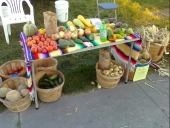


The Humble Soapnut - A Guide to the Laundry Detergent that Grows on Trees ebook by Kathryn Ossing
will be released to subscribers in:
soon!







Can't...NeverCould




Moderator, Treatment Free Beekeepers group on Facebook.
https://www.facebook.com/groups/treatmentfreebeekeepers/









Moderator, Treatment Free Beekeepers group on Facebook.
https://www.facebook.com/groups/treatmentfreebeekeepers/













Can't...NeverCould




Moderator, Treatment Free Beekeepers group on Facebook.
https://www.facebook.com/groups/treatmentfreebeekeepers/













 1
1




Moderator, Treatment Free Beekeepers group on Facebook.
https://www.facebook.com/groups/treatmentfreebeekeepers/






 2
2




K Nelfson wrote:
Beef without haying. Sounds too good to be true. I suspect that the cattle will survive if there's enough land and the conditions are right. Think buffalo herd.
The nutritional content of the grass changes as it goes dormant. Beef production is heavily dependent on the protein content in the feed---this s the reason there's so much grain-finished beef out there. It's a lot easier to get a reliable (low, but reliable) percentage of protein from corn and brewer's grain than from grass. And using old grass must be even worse than that.
If you're trying to reliably produce beef, even just for your family, a more intensive method is needed. If you have objections to that, choose a more practical animal, like sheeps.
Order copies of my book, Dairy Farming: The Beautiful Way at
www.createspace.com
Help spread the word! Thanks!
struggle - hustle - soul - desire




Can't...NeverCould





Order copies of my book, Dairy Farming: The Beautiful Way at
www.createspace.com
Help spread the word! Thanks!
struggle - hustle - soul - desire




Can't...NeverCould








Success has a Thousand Fathers , Failure is an Orphan
LOOK AT THE " SIMILAR THREADS " BELOW !

|
I've never won anything before. Not even a tiny ad:
rocket mass heater risers: materials and design eBook
https://permies.com/w/risers-ebook
|



